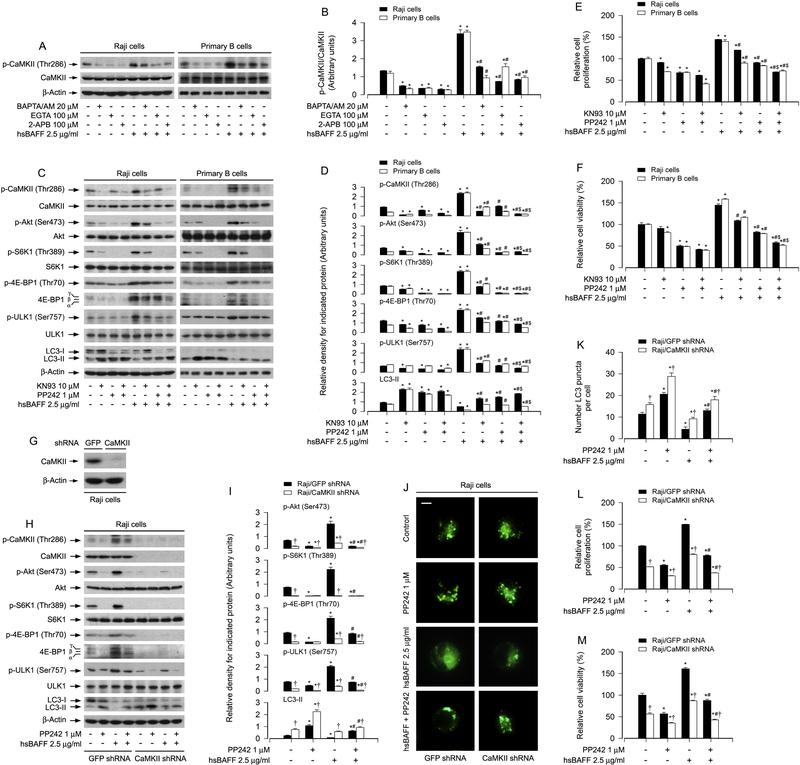Fig. 7. hsBAFF activates Akt/mTOR pathway, inhibiting autophagy and increasing cell proliferation/viability by stimulating [Ca2+]i-dependent CaMKII phosphorylation in B cells.
Raji cells and purified mouse splenic B lymphocytes, or Raji cell infected with lentiviral shRNA to CaMKII or GFP (as control), were pretreated with/without BAPTA/AM (20 μM), EGTA (100 μM) or 2-APB (100 μM) for 1 h, or with/without KN93 (10 μM) or/and PP242 (1 μM) for 1 h, then stimulated with/withoutt hsBAFF (2.5 μg/ml) for 12 h (for Western blotting and GFP-LC3 assay) or 48 h (for cell proliferation/viability assay). (A, C, G and H) Total cell lysates were subjected to Western blotting using indicated antibodies. The blots were probed for β-tubulin as a loading control. Similar results were observed in at least three independent experiments. (B, D and I) The relative densities for p-Akt (Ser473) to Akt, p-S6K1 (Thr389) to S6K1, p-ULK1 (Ser757) to ULK1, p-CaMKII (Thr286) to CaMKII, and p-4E-BP1 (Thr70), LC3-II to β-actin were semi-quantified using NIH image J. (E and L) The cell proliferation was evaluated by cell counting. (F and M) The cell viability was determined by the MTS assay. (J and K) The fluorescence imaging (in green) (J) and quantified number (K) for LC3 puncta in the cells was shown by GFP-LC3 assay. All quantified data were expressed as mean ± SE (n = 5). Using one-way or two-way ANOVA or Student’s t-test, *P < 0.05, difference vs 0 μg/ml hsBAFF group; #P < 0.05, difference vs 2.5 μg/ml hsBAFF group; $P < 0.05, difference vs KN93/hsBAFF group or PP242/hsBAFF group; †P < 0.05, CaMKII shRNA group vs GFP shRNA group.

